Growing remontant strawberries and strawberries
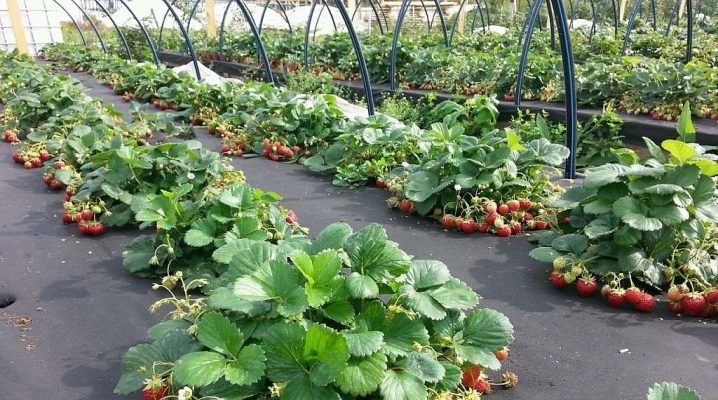
Despite the fact that the cultivation of remontant crops has its own difficulties, the ability to get a crop several times justifies all the difficulties. Nevertheless, careful supervision of the planting of strawberries and strawberries, as well as careful follow-up care, are imperative.


Planting seedlings
Planting a remontant culture in open ground is not considered a difficult task.
Timing
The procedure can be carried out both in autumn and spring. The first option allows you to harvest already in the first growing season, and therefore is considered optimal. In the second case, it is correct to plant crops in March or April, after waiting for the land to dry out. In any case, it is important that the air temperature is at least +15 degrees, and ideally – from +15 to +25.
In the south, it is most convenient to land at the junction of August and September, and in the north and in the middle lane - in the spring.
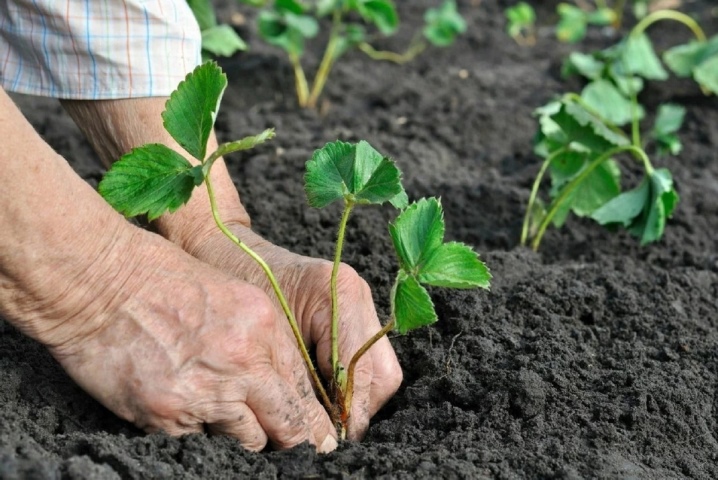
Ground requirements
The land on which the berry crops will be located should have a pH level of 6.0 to 6.5. It is important that the soil has a high-quality drainage system, the soil itself can be any, with the exception of clay and peat. Loam and sandy loam are considered ideal for plants. During the digging of the site and cleaning it from weeds, fertilizers are usually applied. It is customary to prepare the beds about six months before planting the crop in open ground, but a month before the procedure, it is recommended to enrich it again.
Alternatively, for strawberries, this can be a combination of 20 grams of potassium sulfate, 40 grams of double superphosphate, a bucket of compost and 5 kilograms of ash. - this amount is enough for every square meter. For strawberries, organic complexes from a bucket of black soil, a couple of glasses of ash powder, a bucket of compost and a couple of liters of vermicompost are more suitable. By the way, it should be mentioned that the site should be well lit and level, without hills and holes. It is highly undesirable to grow strawberries and strawberries in the lowlands.

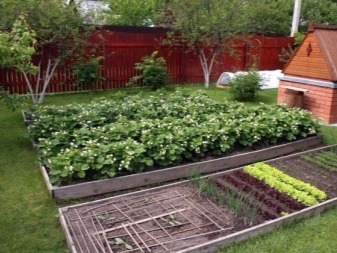
Technology
For remontant strawberries, a linear planting scheme is most suitable, and the bushes should be located at a distance of 45-75 centimeters from each other. The culture should be planted so that the gap between the rows reaches 1 meter, sufficient to accommodate the mustache. In addition, a hill pattern is also suitable, in which the bushes are planted in a checkerboard pattern, observing a 30-centimeter gap from each other. In this case, a slide 20 centimeters high and 60 centimeters wide is formed from the ground.
Strawberries should be planted on a sunny day or in the evening. The dimensions of the holes should allow the entire root system to be expanded. In the middle of the hole, a mound is formed, on the top of which the seedlings are placed, after which the voids are filled with earth. For strawberries and strawberries, it is important that nightshades are not present in their neighbors - they are also considered the worst predecessors.
The best option would be to grow berries in the beds where carrots, herbs, radishes, garlic and legumes used to grow.
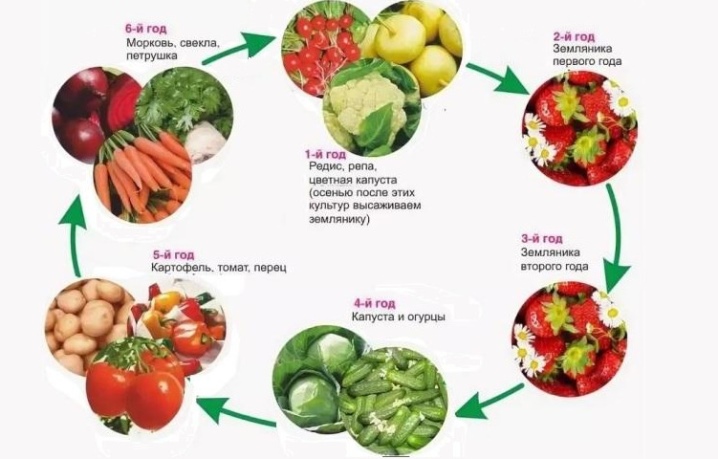
For remontant strawberries, a two-line bush scheme is most suitable, which prevents thickening of the plantings and the appearance of fungi. It requires a 30-centimeter gap between two lines in the tape, as well as a gap of about 70 centimeters between the tapes themselves.
Within one row, strawberries are planted at a distance of 40-50 centimeters from each other, and the width of the beds reaches 90-110 centimeters. The pits for the plant are formed with sides of 25 centimeters. The seedlings in them are located in such a way that the apical bud remains above the surface, and the roots are buried vertically. By the way, in order for strawberry seedlings to take root faster, it is recommended to rid them of all underdeveloped plates, lower leaves and excess sprouts, leaving only full-fledged specimens.
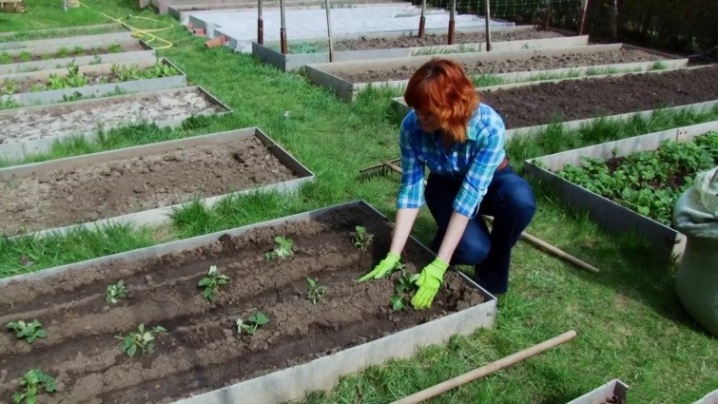
Mention should also be made of several non-standard methods of breeding remontant crops. For example, a vertical method is available for plants, in which the seedlings are located in a variety of containers, including halves of pipes that form several levels. Growing berries "in bags" requires first filling a plastic bag with earth, and then placing the seedlings in it. Such structures with holes can also be hung vertically, which will significantly save space.
The use of covering materials allows you to avoid drying out the soil and prevent the appearance of weeds. In addition, under the agrofibre, earthworms begin to actively multiply, performing the function of loosening the soil, which simplifies the care of the plantings.
Since the fruits are not in direct contact with the ground, this avoids the development of many diseases.
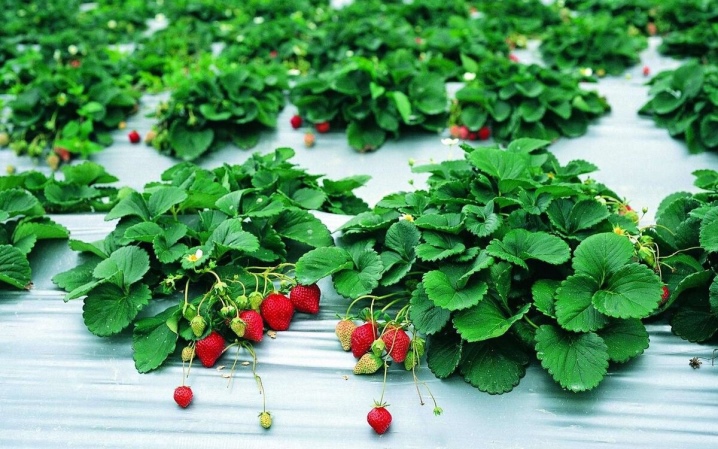
Care
The cultivation of remontant varieties of strawberries and strawberries requires strict adherence to all the rules and terms of agricultural technology. Watering strawberry bushes should be regular, especially at the stage of fruit development and on the driest days. It is important not to allow the soil to dry out and make sure that it remains moistened to a depth of several centimeters: from 2.5 to 3 at normal times and about 5 during the formation of fruits.
For the procedure, you should use the settled liquid, naturally warmed up in the sun. If the soil is dry, then the size of the fruits will decrease, and then they will generally begin to crumble. The presence of a mulch layer will keep the soil as moisturized as possible. In its absence, the surface will need to be regularly loosened to provide oxygen access to the roots of the culture. This should be done shallowly and carefully so as not to damage the root system of the berry.
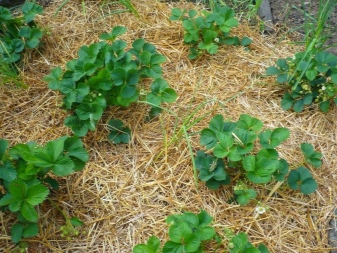
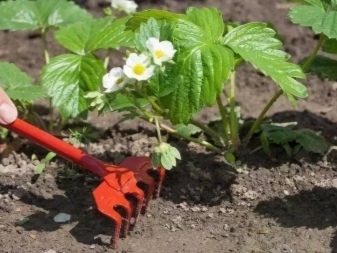
It will be necessary to take care of the culture, and in a timely manner, removing excess leaf blades and mustaches. It is necessary to regularly eliminate the growing shoots, leaving only the most powerful ones, as well as cut off the reddened leaves to rejuvenate the plantations. Spring pruning of old bushes is carried out before the growth of new leaf blades.
It is impossible to grow any plant without timely feeding. The repairing strawberry requires fertilization four times per season, and during fruiting, the procedure is carried out twice. The first time nutrients are introduced into the soil when the snow melts, and the second time, when the bushes have already begun to bloom. Double feeding is carried out during the ripening of the fruits, and the final one - in the autumn months, when the harvest is completed.
The first feeding, carried out in the spring, must necessarily contain nitrogen, which contributes to the growth of green mass.
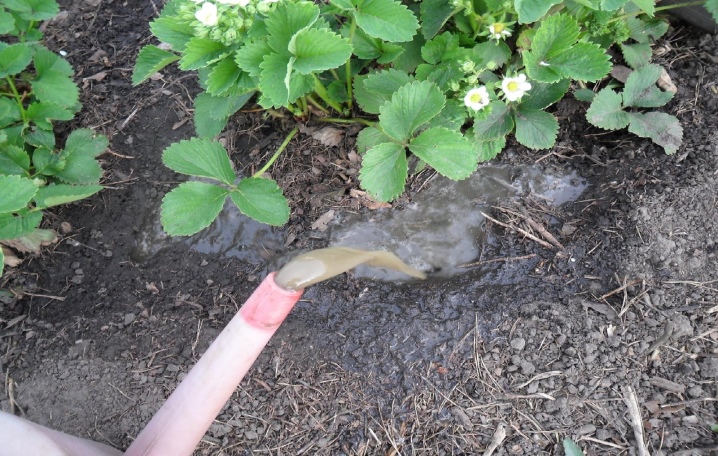
For this purpose, nitroammofoska is usually used, 0.5 liters of solution of which is poured under each bush. In principle, manure that has been infused for a little over a week is also suitable. In this case, first, 1 part of the mullein is supplemented with 5 parts of water, and after the above period, half a liter of the homemade drug is diluted in a bucket of liquid. When watering, each berry bush should receive a liter of nutrient composition. The crop responds quite well to herbal fertilizers such as three-day nettle infusion. A liquid rich in vitamins and minerals will need to be diluted 1 to 10 for root feeding, or strain and diluted 1:20 for spraying on a leaf.
A flowering berry culture necessarily requires mineral elements, so at this stage it should be fed with potassium nitrate or ash. The first substance in the amount of 1 teaspoon is diluted with 10 liters of water and used for irrigation after the appearance of the first peduncles. Each instance receives 0.5 liters of fertilizer. In a similar way, ash is used, a glass of which is combined with a liter of boiled liquid. To make the fruit taste sweeter, you can try fertilizing the beds with chicken droppings at the same time.
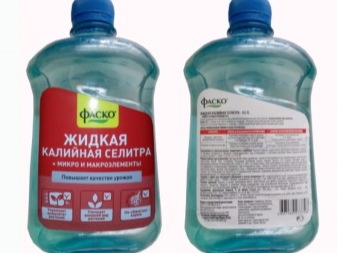

The first fruiting of strawberries is accompanied by intensive double feeding. A mixture of mullein with ash and superphosphate manifests itself best. First, the manure is diluted with water in a ratio of 1 to 8, and then supplemented with 40 grams of superphosphate and 120 grams of ash powder. One liter of the resulting mixture is enough to process one bush. In addition, to restore a weakened plant, it is proposed to use compost, which is placed near the bushes, forming a 7-centimeter layer. Planting leaves are allowed to be sprayed with a solution of zinc sulfate or boric acid.
In autumn, remontant strawberries require exclusively mineral fertilizing, which are carried out two weeks after the final stage of harvesting. For this, 300 grams of ash can be used, which is insisted in a bucket of water throughout the day, or a mixture of 40 grams of superphosphate, 30 grams of potassium sulfate and 10 liters of liquid.
In principle, any ready-made complexes are suitable, but in no case containing nitrogen.
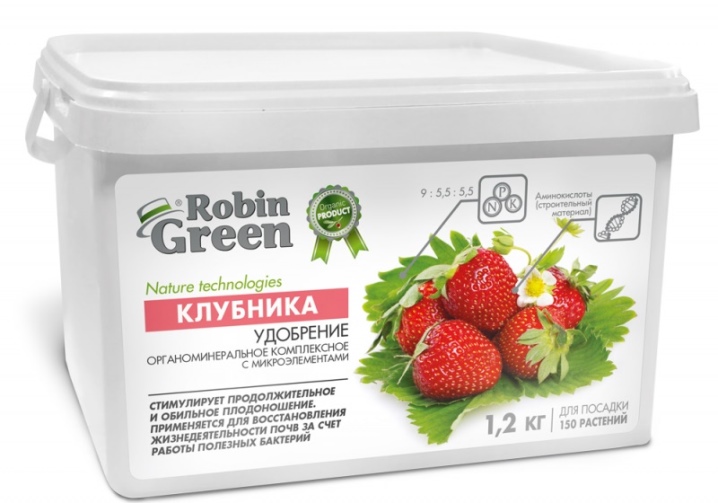
Having collected all the fruits, you can free the bushes from the "used" peduncles, whiskers and diseased leaves. The soil in the beds is well loosened and mixed with the old mulch, and a layer of new material forms on top of it. After the first frost, the beds are covered with white covering material with a density of about 60 grams per square meter - agrofibre or spunbond, and covered with hay, needles or fallen leaves.
The components of caring for remontant strawberries look similar. Watering should be regular, and during fruiting, its volumes are reduced so as not to spoil the taste of the berries. Before the appearance of fruits, the best fertilizer for the crop is considered to be a real slurry, enriched with ash. At the flowering stage, it is best to use a mixture of 2 grams of boron, 2 grams of manganese, 2 grams of zinc and 10 liters of water used to spray the leaves. Mulching the beds is carried out using straw or rotted sawdust.

In the fall, immediately after the end of the harvest season, strawberries are freed from leaves, whiskers and rosettes. It is important to cut both the plates and shoots at the very base so that pests do not settle in the remaining pieces. The culture is treated with insecticides and insulated. For the central and northern regions, for example, the Moscow region, manure or fallen leaves are suitable as winter insulation, from which at least a 5-centimeter layer is formed.
Often, for this purpose, a thick layer of ordinary snow is used, to increase the size of which tree branches are laid between the beds.
In Siberia, a region where temperatures drop to -45 degrees, you will have to use needles and spruce branches.
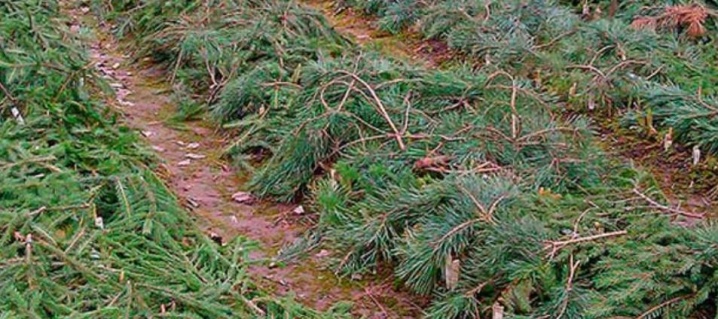
Transfer
Most gardeners are inclined to the point of view that it is better not to transplant remontant berry crops to a new place, except in emergency situations. The fact is that even with proper care, the culture does not withstand more than 3-4 years of "service". Nevertheless, if such a need nevertheless arises, then the procedure should be carried out in early autumn, at least three weeks before the arrival of frost.If the movement of the bushes is carried out in the spring, then you will have to be in time before the emergence of peduncles, otherwise all forces will go to flowering, and not to rooting in a new place.
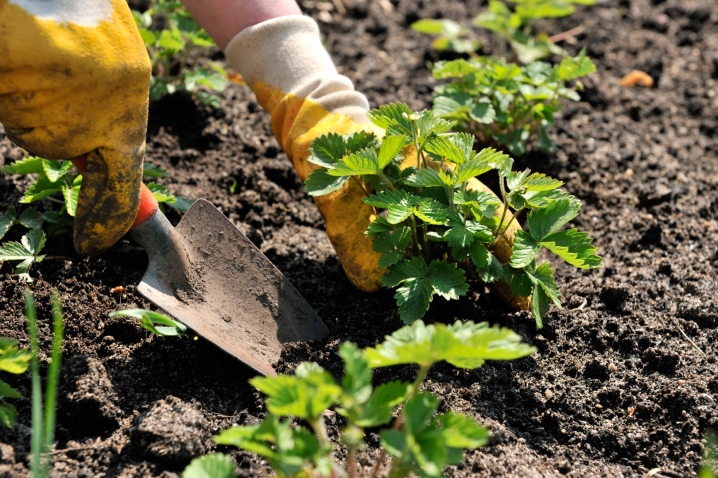
Reproduction
There are several ways to propagate remontant strawberries, including without the use of a mustache. The seed method is far from the most popular, as it causes significant difficulties for gardeners and requires a significant time interval. Working with seeds begins in late winter or early spring. The container is filled with soil, on which, after moistening, the seed is scattered. A small amount of dry earth is immediately laid on top of the seeds, and the whole box is covered with cling film. Germination continues for three weeks, and the temperature in the makeshift greenhouse should not drop below +20 degrees.
As soon as the culture sprouts, the film can be removed, and the container itself can be rearranged in a cool place with high-quality lighting. Diving of seedlings is carried out after the emergence of 4-5 leaves. It is worth mentioning that the seed is quite realistic to get yourself from ripe fruits. To do this, at the end of summer, the best berries are ground in a blender with a large volume of water, and then the resulting substance is filtered through a sieve. The remaining grains are washed, then dried and treated with a growth-promoting drug.

The division of the bush is suitable for strawberry bushes, "stepped over" for the mark of 2-3 years, or beardless varieties. It also helps in a situation with an insufficient number of seedlings, as well as, if necessary, urgently move part of the crop to new beds. A necessarily large and healthy specimen is involved, which has visible divisions with growth points. After careful digging, it is split with a knife.
Finally, most gardeners propagate the remontant berry with a mustache. This method is very simple and allows you to get a harvest the next year. The procedure is accompanied by the use of the strongest shoots of the first order in young bushes, which are laid out in the garden. The appearance of roots at the largest outlets indicates the need to add them to the ground without separating from the mother bush and removing unnecessary whiskers. Somewhere in late summer or early autumn, the sockets are disconnected and immediately transferred, along with a small clod of earth, to their permanent habitat.
Reproduction of remontant strawberries is carried out in the same ways. Despite the fact that the sowing method is also considered difficult, it is he who allows you to get "clean" varieties, free from diseases.
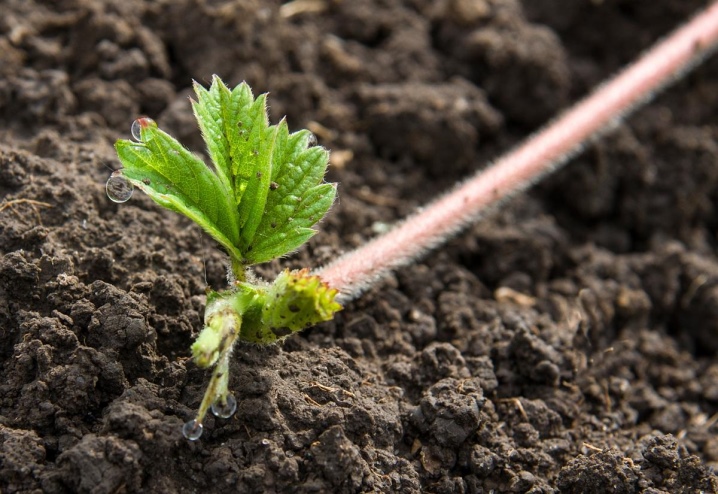
How to grow seedlings?
After the appearance of 4-5 leaves, the seedlings are dived into separate cups with a volume of 150-200 milliliters. While the seedlings continue to develop, they need to be watered in moderate quantities with warm water so that the soil mixture remains moist, but the roots do not start to rot. At this stage, the culture can be fed once with a mineral complex. Approximately a week before planting in open ground, seedlings begin to be prepared, taking them outside for a while.
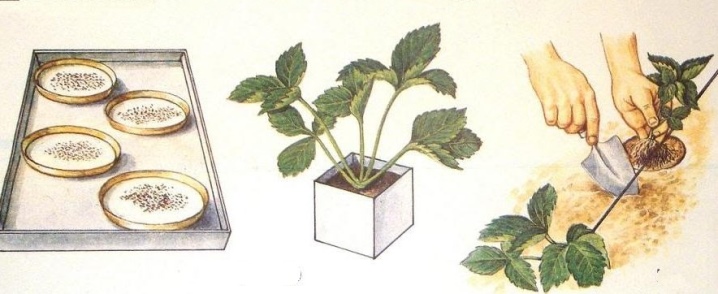
Diseases and pests
Most often, remontant strawberries suffer from various kinds of rot: red root, which slows down the development of culture, as well as sulfur, which causes irreparable damage to the immune system. Infection with mycosis gradually destroys the root system of the bush, and white and brown spots affect the condition of the leaf blades. If the summer is hot, then a fungus often functions on the berries, causing a general wilting of the plant. In addition, remontant strawberries are attacked by insects - spider mites, caterpillars, slugs and others, and its ripe fruits attract birds and even mice.
Pest control, as a rule, is carried out by regulating the care process, as well as using folk recipes. For example, to get rid of ants, a mixture of water and vegetable oil or a small amount of boric acid, which is regularly irrigated with the crop, will come to the rescue. The spider mite actively reproduces in conditions of low humidity, so it will be possible to cope with it with the help of regular watering. The expulsion of mice is facilitated by carboxylic acid, 25 grams of which are diluted in 10 liters of water and poured into the holes of the rodents.
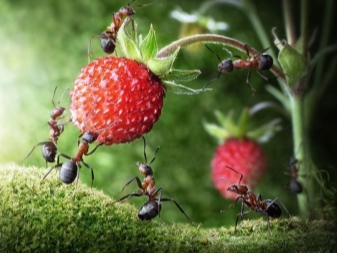

The cause of gray rot is often improper care: admitting thickening, leaving damaged fruits on the beds, contact of strawberries with the ground.
If the culture blooms poorly, and the berries are formed too small, then perhaps the reason lies in the depletion of the bush. - in this case, all that remains is to move the updated instance to a new habitat. If the bushes planted in the previous fall do not bloom at all, then, probably, this procedure was carried out too late, and nothing can be done about it. "Active" plants can also stop forming buds due to insufficient irrigation and fertilization. The reason for the lack of berries during normal flowering is the lack of pollination. This usually occurs with prolonged rainfall or excessive use of insecticides. It is solved by luring bees with anise and coriander oils, applied to the opened buds.

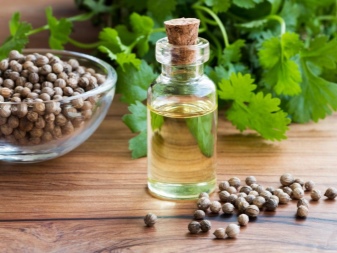
Flowers turn black due to frost, if, when the planting temperature drops, they were not mulched in time with straw or agrofibre. Finally, the dryness and dropping of the buds indicate the activity of the strawberry weevil. When this pest is found, the ground near the damaged specimen is dug up and treated with an insecticide, for example, "Fufanon".
In principle, to prevent the appearance of most diseases and pests, it will be enough to follow the rules for caring for the crop, as well as to carry out iodine treatment in the spring. The product, diluted with water, can be directed at the root or sprayed over the foliage.

In the first case, 15 drops of iodine are combined with 10 liters of liquid, and in the second, the concentration of the active substance is reduced to 7 drops. Processing should be carried out three times from the moment the strawberries wake up, maintaining an interval of 10 days.
As for remontant strawberries, they suffer from similar diseases and pests, but the list can be supplemented with powdery mildew and late blight.
For the treatment of bushes, it is recommended to purchase ready-made preparations of chemical and biological action, as well as to embody folk recipes. For the prevention of diseases, the bushes can be sprayed with Bordeaux liquid and infusion of garlic, and to prevent the spread of the main pests - slugs and grape snails - sprinkle the beds with tobacco dust and ash, combined in equal proportions.
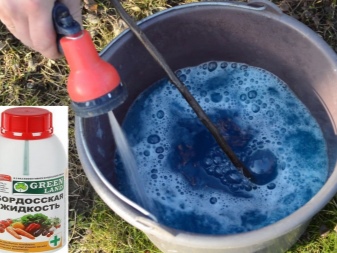
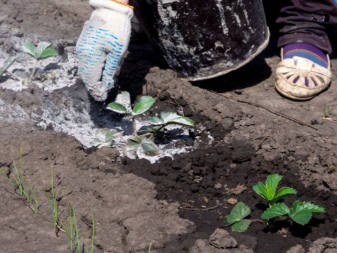













The comment was sent successfully.